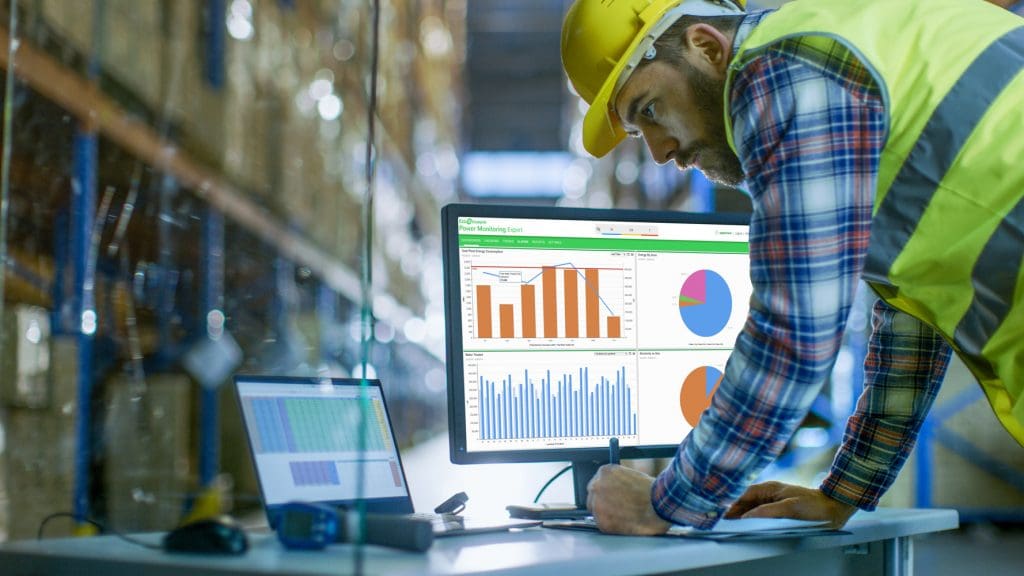The negative effects of climate change are something we read about daily. Climate-related disasters now cost the world economy $520 billion annually. Because of this, sustainability, energy efficiency, and decarbonization are now part of our vernacular, and companies are experiencing market pressure to achieve a net-zero output. To effectively reach net-zero, companies must utilize a targeted framework that receives the same attention and focus as other organizational goals. This is where the ISO 50001 model provides a clear, actionable blueprint that can turn sustainability ambitions into impactful realities.
Implementing ISO 50001 provides organizations with a robust framework to systematically improve their energy performance, reduce operational costs, and enhance sustainability, positioning them as leaders in energy efficiency and environmental responsibility.

Our company, Faith Technologies (FTI), is a Schneider Electric EcoXpert Master Partner. We work with clients to provide them with the data they need to implement a successful ISO 50001 program. Let’s examine the processes of implementing ISO 50001 and how it can benefit organizations.
What exactly is ISO 50001?
ISO 50001 is a voluntary international standard that provides a framework for organizations to manage and improve their energy performance. The standard is designed to help companies develop and implement an energy management system (EnMS) that aligns with their business objectives and operational processes and establish policies, methods, and procedures to achieve energy efficiency and reduce energy costs. ISO 50001 covers several components:
- Energy policy: the foundation for energy objectives and targets, outlining the commitment to improving energy performance.
- Energy planning: identifies significant energy uses, establishes baselines, and sets energy performance indicators while looking for opportunities to improve energy performance.
- Implementation and operation: action plans and processes to integrate energy management into daily operations.
- Performance evaluation: regular monitoring, measurement, and analysis of energy performance are tracked and adjusted as necessary.
- Management review: planned review intervals to ensure EnMS suitability, adequacy, and effectiveness. Any opportunities for improvement are identified.
Importance of metering and monitoring
A critical aspect of ISO 50001 is its emphasis on measuring and monitoring energy performance. While the standard does not explicitly require using meters, metering and sub-metering are vital components of an energy management system (EnMS) under ISO 50001. These data sources are essential for organizations to accurately and reliably track their energy consumption, identify inefficiencies, and validate the effectiveness of energy-saving measures. They provide:
- Granular insights into energy use: detailed insights into how and where energy is used and any specific areas for improvement.
- Data for decision-making: information for identifying inefficiencies and evaluating the impact of energy-saving initiatives.
- Reduced human error: automated metering systems eliminate the potential for data collection errors, ensuring accurate, consistent energy consumption records.
- Measurements that drive continuous improvement: regular monitoring tracks progress toward energy goals and provides the feedback needed to ensure changes made to drive energy savings and efficiencies are realized.
What is the value of ISO 50001 certification?
ISO 50001 certification does more than demonstrate energy efficiency. It proves companies are committed to real action, not just words when it comes to energy efficiency and sustainability. It requires organizations to establish a system of continuous energy management and improvement to ensure long-term gains. This certification can also be a valuable tool to showcase a company’s environmental and energy responsibility.
In Europe, larger companies may see ISO 50001 certification as a requirement, particularly under the Energy Efficiency Directive (EED), which exempts large companies that comply with ISO 50001 standards. ISO 50001 certification empowers businesses to make energy-efficient decisions that can result in real-world improvements. For example, “In line with our ISO 50001 program, we are updating this equipment to use 5% less energy in our process.”
Implementing ISO 50001: Steps and considerations
Implementing ISO 50001 involves an ongoing, systematic approach to establishing, managing, and improving an energy management system (EnMS). Here are the essential steps and considerations for successful implementation:
Phase 1: Initial steps
First, ensure corporate buy-in, with senior leaders providing the necessary resources for driving the initiative. Form a cross-functional energy team to develop, implement, and maintain the EnMS. For starters, use available data to conduct an energy review to analyze current energy use and consumption patterns, identify significant energy uses, and establish baselines.
Phase 2: Develop the Energy Management System (EnMS)
Define the EnMS scope, specifying included facilities, systems, and processes. As a team, establish SMART energy objectives aligned with business goals. Create and communicate an energy policy. Develop action plans detailing activities, responsibilities, timelines, budgets and people resources needed to achieve these objectives. Ensure leaders are supportive of the people and budget needs prior to communication.
Phase 3: Implementation and operation
Incorporate energy management into daily operations and train employees on their EnMS roles, including how to access and assess data pertinent to their areas of responsibility. Share energy management activities and progress to engage stakeholders. Maintain documentation for internal audits and external certification.
Phase 4: Monitoring and evaluation
Track energy consumption using metering and sub-metering. Regularly review and track progress vs. baseline and evaluate the effectiveness of energy savings measures taken. Conduct internal audits to ensure ISO 50001 compliance and identify improvements. Periodically assess the EnMS’s effectiveness, considering audit results and progress toward objectives.
Phase 5: Continuous improvement
Update action plans regularly to address new opportunities and challenges, continuously seeking ways to enhance energy performance. Maintain the EnMS by adhering to ISO 50001 requirements, undergoing regular external audits, and demonstrating ongoing improvements in energy performance.
Automated tools and solutions for ISO 50001
ISO 50001 can be simplified with advanced software and metering solutions. Power monitoring and control software automates reporting and compliance using data from IoT-connected meters and sub-meters. These solutions provide real-time data on energy consumption, helping organizations monitor performance, identify inefficiencies, and validate energy-saving measures. They reduce human error and ensure consistent, reliable reporting, making compliance with ISO 50001 easier to demonstrate.
Other platforms and performance analytics tools streamline ISO 50001 planning and implementation by centralizing energy and sustainability data, providing a holistic view of an organization’s energy performance. Operators can track energy usage, benchmark against industry standards, and identify opportunities for improvement. Performance analytics leverage AI and provide advanced data analysis and visualization tools, which help organizations pinpoint inefficiencies and optimize energy management strategies. These automated tools facilitate informed decision-making and continuous improvement, essential to a successful ISO 50001 implementation.
Partner with an expert advisor
ISO 50001 does more than take a snapshot of a building’s energy use—it provides a process for using data to establish new performance goals and set the facility on a path of continuous improvement. As a Schneider Electric EcoXpert Master Partner, FTI has deep expertise in energy analysis and automation, leveraging its digital solutions for efficiency, sustainability, and resilience. This includes complete solutions for power management systems and metering devices and gateways that support ISO 50001 certifications.
An ISO 50001 program can drive very positive business results and impacts for your company. The team at FTI would love the opportunity to discuss your company’s goals and how we can help you achieve them.
To learn more about how FTI can help incorporate ISO 50001 into your organization, visit www.faithtechinc.com and submit an inquiry to talk with Todd George and the Digital Energy team.
EcoXperts are the enablers of net-zero buildings
The EcoXpert Partner Program is unique in its industry and made up of a best-in-class, global ecosystem of expertise. Trained and certified by Schneider Electric, EcoXpert partners digitize and electrify our world for a more sustainable future.
The path to net-zero is about delivering solutions for sustainable, resilient, efficient, and people-centric buildings. For our EcoXpert partners, this unveils immense growth opportunities through the transition to end-to-end portfolio sales that will resolve our customers’ most critical needs. For our shared customers, this means that together with our EcoXpert partners, we will drive the building industry transformation and help our customers survive and thrive today – and tomorrow.
Visit the EcoXpert webpage to learn more.



Add a comment